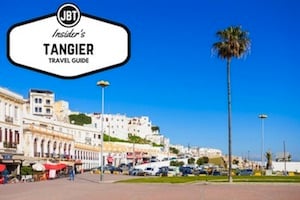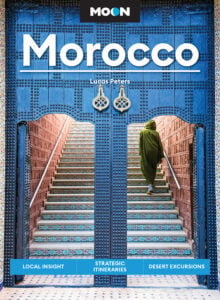
The Kingdom of Morocco is a diverse country with an easily recognizable and rich culture. However, when you look closely, Morocco is also a melting pot of foreign influences. The geographic position of Morocco and its history have resulted in a complex web of cultural contributions. Moroccans are extremely proud of this fact and thus view their country as open and welcoming. Apart from the recent and obvious French influence, Morocco has a strong connection to Spain.
Spain and Morocco: History
The importance of Morocco as a trading route between Africa and Europe is key in its historic and cultural development. Even before the Islamic Conquest by the Umayyad Empire, the Carthaginians and Phoenicians extended their influence to the region. At the height of the Roman presence, Morocco was known as Mauretania, with Volubilis as its capital. The conversion to Islam came through the Moors who then extended their influence to Spain.
Andalusia was known as El Andalus for seven centuries. Muslims greatly influenced the language, architecture, food, art and music of this region of Spain. Later, the Almoravids and Almohads continued their influence and established a rich and tolerant society. However, by 1492, the Spanish Reconquista was complete and they retreated to North Africa. Many of the Jews established in Spain, who had been welcomed by the Moors, fled to Morocco as well. The Jews were to have a significant presence and influence in Morocco, although the community is much smaller now. I even heard stories that some Jewish families in Morocco still have the key to their house in Spain.
Spain and Morocco: The Protectorate Era
In the 19th Century, European influence progressed in Morocco. With its long-held position as a key trade route, Morocco became the subject of imperial rivalries between European countries. France had established a significant degree of influence in Morocco. The country also experienced internal instability and rebellions against the Sultan. In 1912, the Treaty of Fez created the French and Spanish Protectorates, designed to provide stability while protecting the kingdom’s sovereignty. The French extended their influence over most of the country, while the Spanish received a northern strip of land on the Mediterranean coast and in the south, near the Sahara desert. Tangier was excluded and remained an “international city”. The Spanish established their capital in Tetouan and the Spanish zone of the north expanded from Larache to beyond Melilla, including Ksar El Kebir, Asilah and Chefchaouen. In 1936, General Franco launched his conquest of the Spanish Republic from Melilla, one of the two Spanish enclaves in Morocco. Interestingly, Melilla is the last Spanish territory to have a statue of Franco on display.

Spain and Morocco: Language & Culture
The Spanish Protectorate ended in 1956, at the same as the French one. However the influence and the cultural connection remains. In the north of Morocco, in places like Tangier and Tetouan, a lot of people speak Spanish before they speak French. Finally, arabo-andalusian music, known as “al moussiqa al andaloussia”, is a lively example of this cultural connection. Initially developed in Spain, this musical tradition came back to North Africa and expanded throughout the North of Morocco.
Spain and Morocco: Food & Lifestyle
The Mediterranean lifestyle of the north of Morocco is influenced by Spain. The large avenues of Tangier and Tetouan lends themselves very well to the paseo, a Spanish habit of taking a walk in the evening. Typically Spanish dishes like churros are still available in menus of the north. Even as far away as Marrakesh there has been an interest in bocadillos, a kind of Spanish sandwich. And whilst Morocco is considered a “tea country,” you can find good coffee on the little squares in the Tangier medina.

More subtly, one of Morocco’s most famous dishes has a background in Spain. bastilla, (often pastilla or bisteeya) is a Moroccan meat pie, usually prepared for special occasions. The meat is usually chicken or pigeon, however there are versions with fish and offal as well. Bastilla is a labour of love, and a beautiful combination of sweet and salty flavors. The meat is slow cooked in broth the day before serving, and shredded before being mixed with herbs and spices. The meat is then wrapped in layers of thin werqa pastry, brushed with butter. A layer of toasted and ground almonds, cinnamon and sugar adds sweetness. Many Moroccan dishes require time and patience however bastilla is also an art form.
Spain and Morocco: Architecture
Traditional Moroccan architecture is typically designed to protect from the heat and also from invasions. Moroccan houses in the medina often have a solid door, thick walls and small windows. Entering those houses is often a revealing experience: behind the heavy door is a stylish home with a garden and a water feature… However, in the north of Morocco, some houses present with some elaborate wrought-iron windows. The Moorish architecture of the Alhambra was exported to Morocco after the Reconquista. Throughout the Protectorate Era, the art deco style spread in Morocco, especially in the modern cities of Casablanca and Rabat.

Spain in Morocco
Aside from a visible influence in history, culture, architecture, art and culinary tradition, Spain still has some territories in Morocco. This is a politically sensitive fact and it feels slightly funny to cross a land border to get into Spain in Ceuta or Melilla. However, both enclaves offer the opportunity to enter Spain overland and experience a very different atmosphere to that of Morocco. Both are worth a visit.
The enclave of Melilla also has some 900 Art Deco buildings, mostly due to the influence of Enrique Nieto, a Spanish architect student of Gaudi. Ceuta is a pleasant coastal town and a testimony of the closeness of Spain.
More controversial are the Spanish islands, just off the coast of Morocco: Peñon Velez de la Gomerra, Peñon de Alhucemas and the Chafarinas Islands are occupied by Spanish garrisons and can’t be visited. They are, however, quite a sight from the coast!
Spain and Morocco Today
Today, Morocco and Spain still continue their long association as joint gateways between Europe and Africa. Morocco is attractive to Spaniards as a land of investment, holidays and even immigration. Spain is actively involved in the preservation of its historic patrimony in Morocco and its influence is acknowledged and even celebrated. As an example, the Province of Andalucia funds renovation projects in Tetouan, the Protectorate’s former capital. Also, there are regular cultural events celebrating Spanish influence in Morocco through film, literature or music. Whilst the French influence is more obvious in Morocco, discovering aspects of the Spanish connection is an interesting and subtle way of understanding more about this beautiful country.

 About the Author
About the Author






